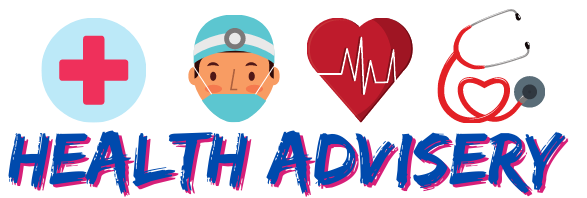Telemedicine has become increasingly popular in today’s hectic environment, where getting a doctor’s appointment often takes weeks.
In emergencies, many patients schedule an appointment at an urgent care facility, but most people don’t like the extended waiting time and requirements of making a new medical appointment.
That’s why Dr. James Murtagh supports the benefits of getting answers to simple medical questions through telemedicine services.
Patients can take advantage of technological advances and secure patient portals to receive medical advice from their primary care physicians by phone and digital communications.
Table of Contents
Understanding How Telemedicine Works
Telemedicine enables patients to discuss their symptoms and medications with a healthcare provider using video, patient portals, and email communications.
Patients can often receive a preliminary diagnosis, change medications that aren’t working, discuss possible interactions between prescribed medicines, and learn how to avoid getting various medical disorders in the future.
Patients can even have their medical devices monitored remotely as needed. As an ardent supporter of medical education, Dr. James Murtagh encourages his patients to take advantage of telemedicine for convenience, faster medical diagnoses, and more affordable prices.
According to Dr. Murtagh, telemedicine technology offers three types of medical services:
- Interactive medical treatments: In this type of medicine, doctors and patients interact in real-time. Patients can get immediate answers to their questions, change their medication or dosage and get a preliminary diagnosis of medical problems.
- Remote patient monitoring: This type of telemedicine monitors health monitoring devices remotely to keep a careful eye on a patient’s health, healing progress, and basic data like blood sugar levels, blood pressure, body temperature, etc.
- Storage and forwarding: This aspect of telemedicine maintains health information and makes it possible to share accurate information with other health providers and patient-authorized agencies and individuals.
Healthcare providers have been offering remote services since the 1950s using landline phones, but digital advances have expanded options for getting medical advice and services for remote consultations.
As a respected healthcare writer, Dr. James Murtagh supports telemedicine because of the substantial benefits it offers patients.
Benefits of Telemedicine Services
Telemedicine provides significant benefits to patients, like faster answers to questions and medical concerns.
Busy people often don’t have the time to take off work for a routine medical appointment, and some patients live in remote areas, making the logistics of seeing a doctor difficult.
Some people don’t have transportation. Telemedicine reduces the need to visit an emergency room or prevent minor medical issues that could quickly grow more serious.
Telemedicine also makes getting medical assistance more affordable, which is a valid concern for low-income people who often must balance paying medical expenses against putting food on the table.
As published in a 2017 study, the average doctor’s visit runs $149 or more, which compares to $79 for a telemedicine visit. More states are requiring insurance companies to reimburse patients for telemedicine expenses.
When Telemedicine Isn’t an Option

Telemedicine isn’t appropriate for emergencies like heart attacks, strokes, broken bones, severe cuts, and cases where imaging services are needed.
Patients can get advice and telemedicine assistance for psychotherapy, insect bites, rashes, sore throats, birth control medication, flu, digestive problems, pink eye, etc.
Information About Dr. James Murtagh
Dr. James Mutagh has earned respect from his peers and colleagues for his expertise in pulmonary and internal medicine and sleep apnea treatment.
After graduating from the University of Michigan School of Medicine, Dr. James Murtagh pursued two internships at the Parkland Memorial Hospital of Dallas, Texas, and a senior Fellowship sponsored by the NIH.
Eventually, Dr. Murtagh was recognized as one of the top six scientists advising the Boehringer-Mannheim Corporation, which was eventually renamed Roche Diagnostics Corporation.
Pulmonary Disease
Pulmonary medicine affects other internal systems, and pulmonary disease has no known cure for extreme cases. Many patients develop the disease from a lifetime of smoking, and treatments can provide substantial relief from symptoms.
Dealing with pulmonary disease can incorporate a few different lung conditions that cause breathing difficulties. Dr. James Murtagh is just one of many who specialize in this area of medicine.
While there’s no cure for extreme cases, early diagnosis and treatment can make life much easier for patients. Other causes of pulmonary disease include bacteria, viruses, and other pathogens, including chemicals and pollutants. Symptoms include difficulties breathing, wheezing, and coughing. The severity of symptoms can vary tremendously.
The most severe cases are called Chronic Obstructive Pulmonary Disease, COPD for short. Treatments can slow the disease’s progress, and Dr. James Murtagh uses various treatment options to relieve symptoms temporarily. Getting healthy rest, quitting tobacco, and taking breathing treatments can help to control symptoms.
Sleep Apnea, a Hidden Sleep Disorder
Dr. James Murdoch also specializes in research, education, and treatment of sleep apnea, which often remains undiagnosed. Sleep apnea is a pause in breathing brought on by various conditions like throat obstructions and brain glitches that pause breathing while sleeping.
Many people probably have experienced an inability to breathe, and they typically wake up and catch their breath. In bad cases of sleep apnea, breathing might pause up to 30 times per minute. Some pauses last a minute or longer and threaten possible brain damage or death because of insufficient oxygen.
The types of sleep apnea include obstructive, central, and mixed. Obstructive is the most common type, and it is caused by throat blockages, including throat inflammations or injuries, excessive neck, fat, or muscles in the throat relaxing too much and blocking the air passage. Symptoms often include snoring, difficulty sleeping, and feeling tired during the day. Sleeping on the back can also aggravate symptoms.
Central sleep apnea is caused by a brain malfunction in the area that controls breathing. Mixed sleep apnea includes symptoms of both obstructive and central sleep apnea.
Treatments are available to help patients sleep, including surgical intervention, dietary practices, and medications. Dr. Murtagh takes a proactive approach by educating people about the dangers of sleep apnea and developing a custom plan for treating each case.
Obese men over 40 are most susceptible to the disorder, and one estimate suggests that 25% of men develop the condition. Only about 10% of women typically develop some form of sleep apnea.
Dr. James Murtagh’s Empathetic Approach to Medicine
Dr. Murtagh believes strongly in educating patients on medical topics. He has also formed a group committed to easing the financial burdens of getting medical assistance for low-income people and families.
Telemedicine extends the number of people who can access Dr. Murtagh’s medical skills and knowledge.

